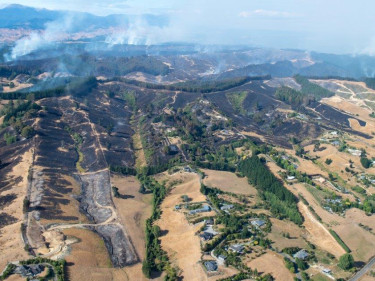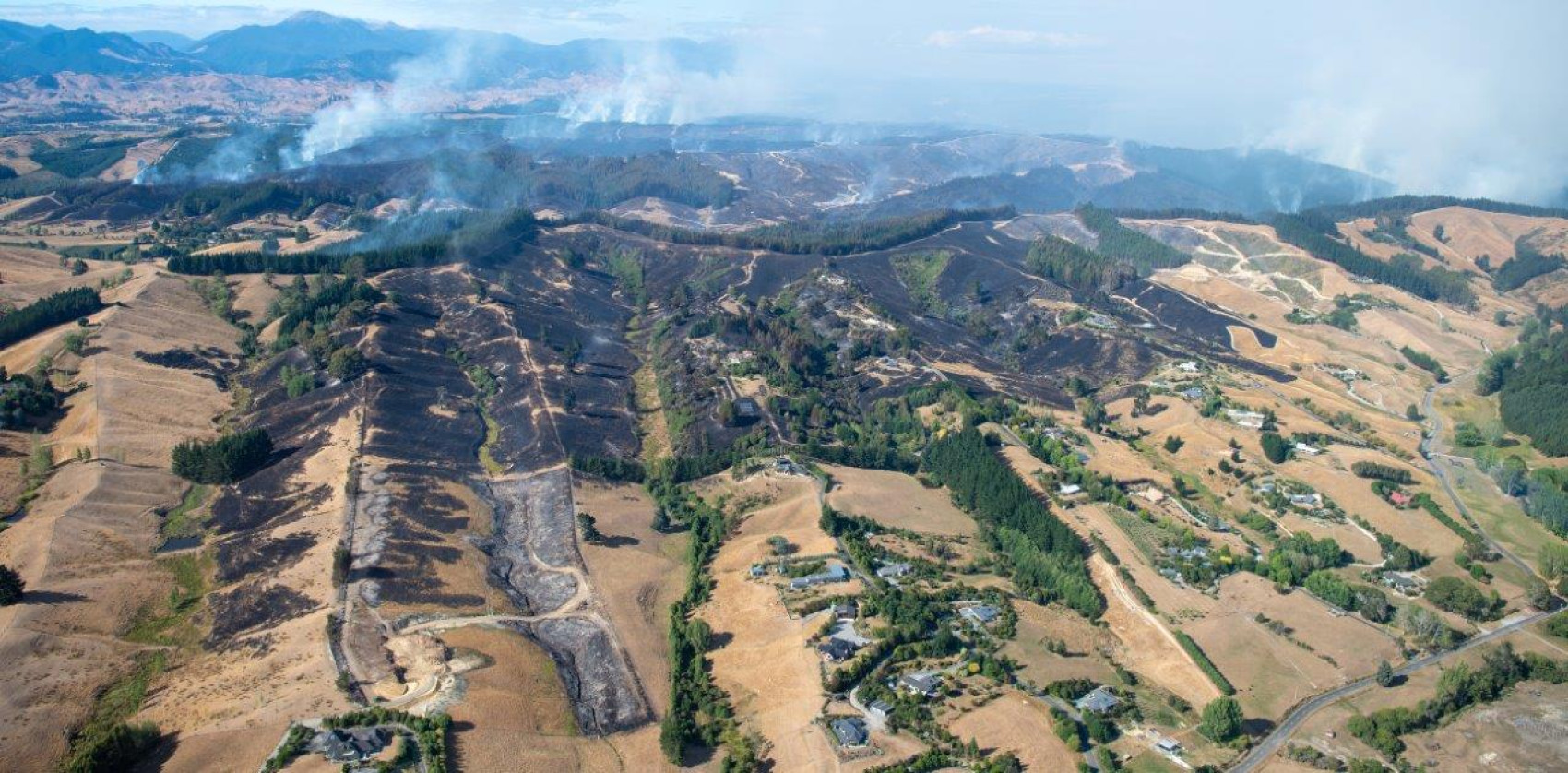AFAC Independent Operational Review of the Tasman fires, 2019
The Pigeon Valley fire near Nelson started on 5 February 2019 and went on to burn over 2,300 hectares including significant areas of pine plantation over February and March 2019.
At its peak, Fire and Emergency New Zealand deployed 23 helicopters, two fixed wing aircraft, 23 heavy machines and more than 150 firefighters.
Approximately 3,000 people and 700 livestock and pets were evacuated.
During February and March other fires broke out at Rabbit Island, Atawhai, Moutere Hill and Dovedale Hill.
These extra fires significantly added to the complexity our fire managers and firefighters already faced.
No human lives were lost. For that we are grateful. But the physical and economic damage to property and the environment in the region was considerable.
The Tasman fires were an extreme event and one of the bigger vegetation fires we’ve had in New Zealand for decades.
Our crews were supported by significant resources nationally, regionally, and locally, both within Fire and Emergency and with our partner agencies. Over many weeks our people worked together with other emergency services, local government, iwi, and with partner agencies to provide support to the Tasman District community, and ultimately, to bring that event to a successful conclusion.
As a new organisation we are committed to continuous improvement. We strive to improve.
We commissioned the independent operational review of our management of the Tasman Fires because the fires provide an opportunity to learn more about managing large wildfires better for the safety of the community and our people.
The independent reviewers have broad and varied experience of structure fires, wildfire management and aviation operations in both Australia and New Zealand.
We welcome the review’s findings. They provide us with a great opportunity to improve the way we manage such incidents.
The full report can be downloaded here.
Tasman Fires Action Plan
Fire and Emergency New Zealand developed the Tasman Fires Action Plan in response to the lessons and opportunities identified in the independent report into the Tasman fires. We want to improve how we manage wildfires: it is only a matter of time before the next one occurs. Fire and Emergency accepted the independent report’s recommendations and this plan outlines how we will respond to them.
The actions and timelines for achieving these actions are subject to change as they need to be balanced against the other areas of organisation development and prioritisation. Fire and Emergency’s financial position as a result of COVID-19 is not yet fully known and the impact of this will need to be a factor when determining organisation priorities.
Many of the recommendations and associated action plan deliverables affect communities, stakeholders or partner agencies. We intend to develop these deliverables by working collaboratively with communities and across partner agencies and this is being demonstrated through work already underway.
Tasman Fires Action Plan Progress Update - 30 April 2022 [342 KB]
Tasman Fires Action Plan Progress Update - 31 October 2021 [617KB]
Tasman Fires Action Plan Progress Update - 30 April 2021 [249KB]














